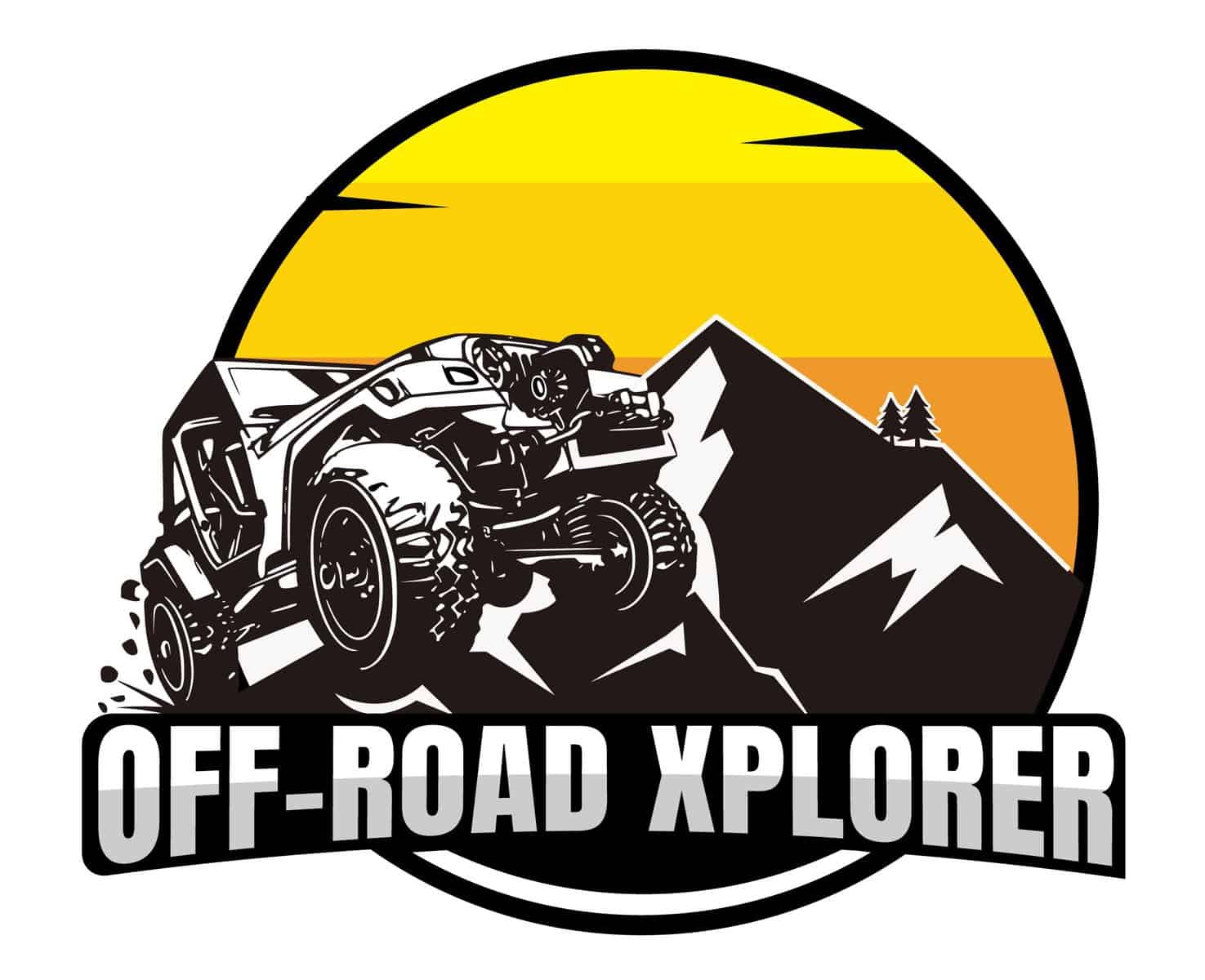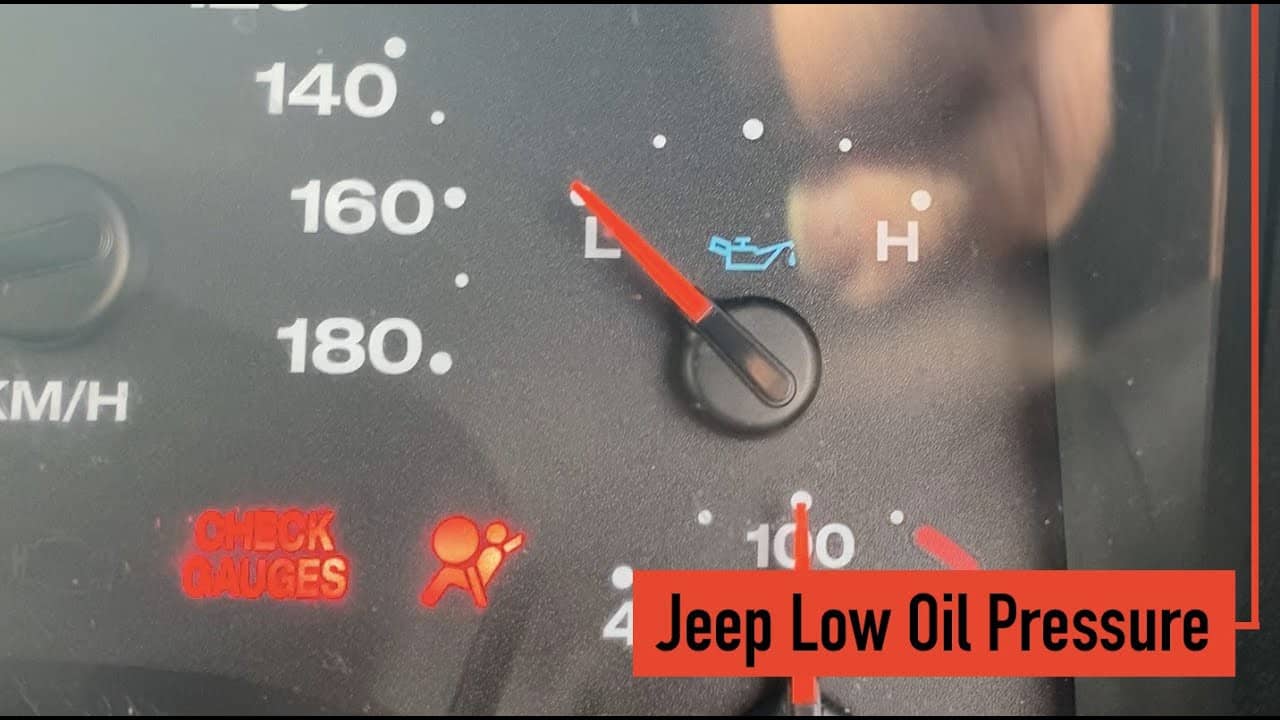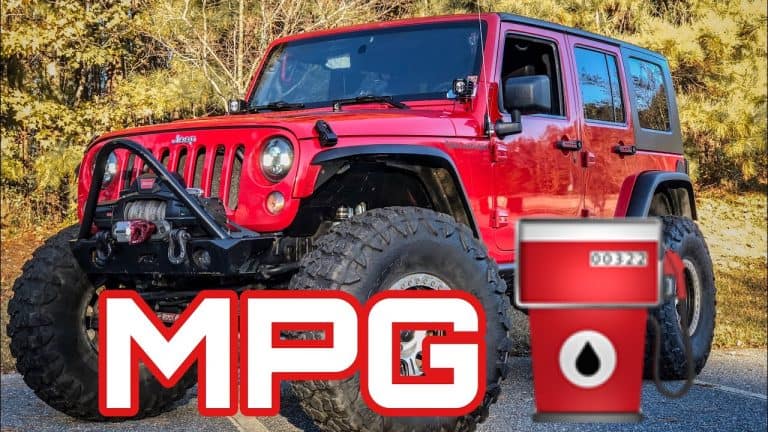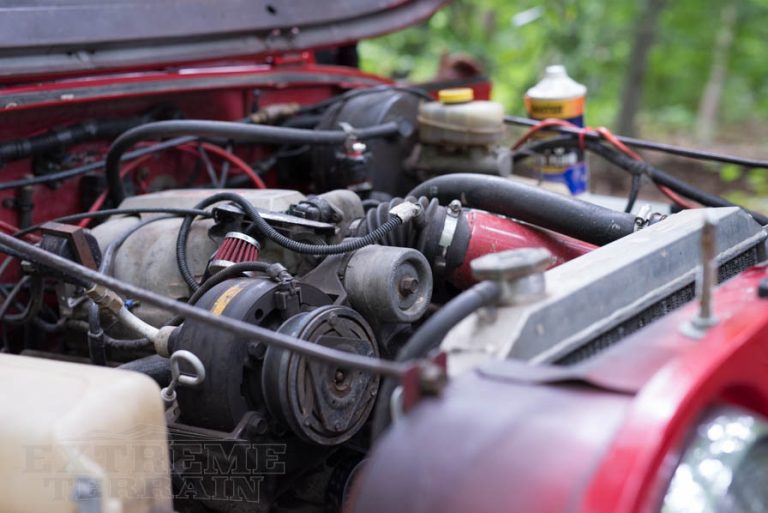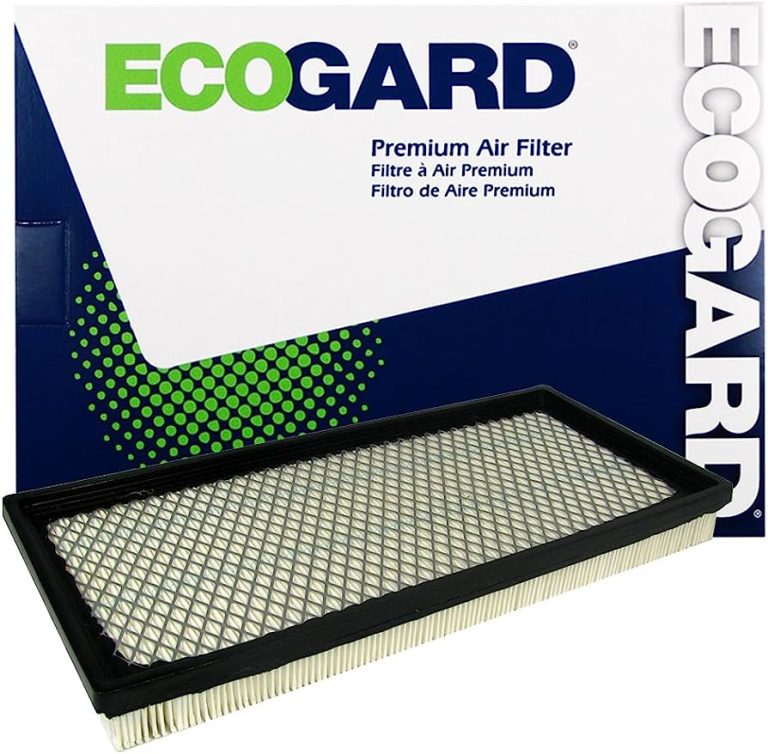What Is Normal Oil Pressure For A Jeep Wrangler: Significance for Optimal Performance
The normal oil pressure for a jeep wrangler should be between 35 and 45 psi at idle and between 45 and 65 psi while driving. Jeep owners should get their oil pressure checked regularly to ensure the vehicle is running smoothly and to prevent any potential damages to the engine.
Keeping track of the oil pressure in your jeep wrangler is an important part of routine vehicle maintenance. By monitoring the pressure, you can identify potential issues before they escalate into more significant problems, such as engine damage. A healthy oil pressure range for a jeep wrangler is between 35 and 45 psi at idle and between 45 and 65 psi while driving.
In this article, I will discuss what is normal oil pressure for a jeep wrangler. As a jeep owner, staying on top of regular maintenance tasks is important to keep your vehicle running smoothly for years to come.

Credit: www.amazon.com
What You Need To Know About Jeep Wrangler’S Oil Pressure
Jeep Wrangler is the perfect vehicle for off-road adventures. One important factor that needs to be considered when driving a jeep wrangler is oil pressure. Understanding your jeep’s oil pressure is essential for proper maintenance and preventing potential engine damage.
This section will discuss everything you need to know about oil pressure for a jeep wrangler.
Introduction To Jeep Wrangler’S Oil Pressure
Oil pressure is the measure of how well the oil is flowing through your engine. If there isn’t enough pressure, the oil won’t lubricate the engine properly, which can lead to significant damage. A jeep wrangler’s typical oil pressure range is 30-40 psi (pounds per square inch) when the engine is at operating temperature at idle.
When driving at high speeds, the pressure can increase to around 60-70 psi.
Why Understanding Oil Pressure Matters
Proper maintenance of the jeep wrangler’s oil pressure is crucial as it provides insight into your engine’s overall health. If your jeep’s oil pressure dips too low, it can cause significant engine damage; if it’s too high, it can cause oil leaks.
Therefore, it’s essential to understand why maintaining normal oil pressure is vital.
Here are some reasons why understanding oil pressure matters:
- It helps prevent engine damage: If the oil pressure is too low, it can cause engine damage by not lubricating it correctly.
- It provides a warning system: Low oil pressure indicates an underlying issue with your engine, which must be addressed immediately.
- It helps maintain the longevity of your engine: Regular maintenance and care of your jeep’s oil pressure ensure a healthy engine.
- It saves you money: Taking proper care of your jeep’s oil pressure can save you money in costly engine repairs in the long run.
Understanding your jeep wrangler’s oil pressure is essential to maintaining your vehicle’s overall health. With proper care and maintenance, your Jeep’s engine will have a longer life span, saving you money in costly repairs.
How Jeep Wrangler’S Oil Pressure System Works
Explaining The Oil Pressure System
Maintaining proper oil pressure levels is crucial for any vehicle, including the jeep wrangler. The oil pressure system is responsible for ensuring that the engine has enough oil and that it is distributed correctly throughout the engine. Here are the key points to know about the oil pressure system:
- The system uses an oil pump to circulate the oil through the engine. The pump is connected to the engine’s crankshaft and comprises several moving parts.
- The oil pressure sensor within the engine is responsible for monitoring the pressure levels on a gauge and sending that information to the driver.
- The oil filter within the engine removes dirt and debris that might reduce the oil pressure levels.
The Role Of Oil Pump, Sensor, And Filter
The oil pump, sensor, and filter are vital in ensuring the engine’s oil pressure levels stay optimal. Here is a brief rundown of each component:
- Oil pump: This mechanism is responsible for moving oil through the engine. The engine’s crankshaft drives the oil pump and can either be internal or external to the engine.
- Oil pressure sensor: The sensor monitors the oil pressure levels within the engine and relays that information to the driver. In the jeep wrangler, the sensor is connected to a gauge on the dashboard.
- Oil filter: The filter helps remove dirt and debris from the oil, preventing them from causing clogs and other problems that can reduce oil pressure.
Common Causes Of Low Or High Oil Pressure
Low or high oil pressure can harm the engine’s health. Here are some common causes of both low and high oil pressure:
- Low oil pressure: Low oil pressure can be caused by a malfunctioning oil pump, a clogged oil filter, or a low oil level in the engine.
- High oil pressure: High oil pressure can be caused by a malfunctioning oil pressure sensor or a blocked oil pump relief valve.
A clear understanding of how the oil pressure system in your jeep wrangler works and what can cause fluctuations in oil pressure is essential to ensure that you maintain optimal oil pressure levels. Regular maintenance, including oil changes and filter replacements, can also help prevent problems with the oil pressure system.
Symptoms Of Low Or High Oil Pressure
What Is Normal Oil Pressure For A Jeep Wrangler
Jeep Wrangler owners know that keeping track of the oil pressure gauge is critical, as it indicates whether the engine oil distribution is adequate. A jeep wrangler’s normal oil pressure readings should be between 35-45 psi, although older Jeep models may vary slightly.
Any significant deviation from these normal oil pressure levels is a cause for concern and may require immediate attention. This blog post will discuss the symptoms, consequences, and remedies of low and high oil pressure levels.
Signs Of Low Oil Pressure
Low oil pressure is a common issue for Jeep wranglers, and it can cause severe engine damage if left untreated. The following are some of the most common signs of low oil pressure:
- The oil pressure gauge reads lower than normal.
- Rattling or ticking noise in the engine, especially at idle or lower speeds.
- Poor performance or reduced engine power.
- Oil leaks around the engine.
Consequences Of Running With Low Oil Pressure
If the engine oil level is too low, the engine can suffer serious damage or even total failure. Here are some consequences of running with low oil pressure:
- Increased friction and heat in the engine components can cause wear and tear to the bearings, crankshaft, and cylinder walls.
- Overheating can cause irreparable damage to pistons, piston rings, and cylinder walls.
- Seized engine, which can be an expensive repair job.
Signs Of High Oil Pressure
While high oil pressure is less common than low, it can lead to significant engine damage if not addressed promptly. Some of the most common signs of high oil pressure are:
- An oil pressure gauge that reads higher than the normal range.
- A sudden increase in engine noise, especially on startup.
- Smoke or steam coming from the engine compartment.
- Engine oil leaks.
Consequences Of Running With High Oil Pressure
High oil pressure is usually caused by blocked or restricted oil passages in the engine. This can cause oil pressure to build up and cause damage to engine components. Here are some consequences of running with high oil pressure:
- High pressure can cause engine oil seals to fail, leading to oil leaks.
- The engine bearings can be damaged due to increased friction and heat.
- The oil pump can be damaged, leading to a total engine failure.
Keeping an eye on the oil pressure gauge is vital to maintain your engine’s optimal performance and longevity. Suppose you notice any of the symptoms listed above. In that case, having your jeep wrangler inspected by an experienced mechanic who can diagnose the problem and provide a reliable solution is essential.
Remember, regular maintenance and timely repairs will keep your jeep wrangler running smoothly for many years.
Maintaining Jeep Wrangler’S Oil Pressure
The oil pressure for a jeep wrangler is integral to the engine’s overall functionality. Low oil pressure can lead to engine failure. Getting the proper oil pressure is essential to maintain your vehicle’s longevity. This section will discuss how you can maintain the jeep wrangler’s oil pressure, including regular oil pressure check-ups, recommended oil type and brand, and the importance of the oil change interval.
Regular Oil Pressure Check-Up
Regular oil pressure check-ups ensure your jeep wrangler’s engine runs smoothly. A low-pressure reading may indicate a problem that needs to be fixed. Here are the key points to keep in mind during the check-up:
- Check the oil pressure when the engine is running at operating temperature.
- Oil pressure should be steady and at a normal range.
- A drop in oil pressure may signify a problem like a faulty pressure gauge or an oil pump issue.
Recommended Oil Type And Brand
The next thing to consider is the type and brand of oil for your jeep wrangler. Using the right type of oil can considerably improve the oil pressure. Here are the key points to keep in mind:
- Use synthetic or high-mileage oil for Jeep wranglers manufactured after 2001.
- For jeep wranglers manufactured before 2001, conventional oil is appropriate.
- Only purchase oil from trusted brands with a good reputation.
Importance Of Oil Change Interval
An appropriate oil change interval is critical to maintaining the jeep’s oil pressure, and it can vary depending on the driving habits, environmental conditions, and type of oil used. Here are the key points to keep in mind:
- Change the oil every 3,000 miles if you frequently ride in extreme heat or conditions.
- Change the oil every 5,000 miles if you primarily drive in moderate conditions.
- Change the oil every 7,500 to 10,000 miles if you drive the vehicle occasionally or in mild weather.
- In situations where you are uncertain, check the oil quality at regular intervals and adhere to the oil change interval recommended in your vehicle’s owner’s manual.
Maintaining the jeep wrangler’s oil pressure is critical to keeping your vehicle functioning efficiently. Regular oil pressure check-ups, using the recommended oil type and brand, and adhering to the appropriate oil change interval will keep the engine running smoothly for years.
Remember to check your vehicle’s owner’s manual regularly for the suggested oil change schedule and the recommended type and brand of oil.
Troubleshooting Jeep Wrangler’S Oil Pressure Issues
Jeep wranglers are remarkable off-road vehicles that deliver maximum performance in extreme terrains. However, like every other car, they always require basic maintenance, with oil pressure checks being a crucial aspect. If your oil pressure reading varies from what is considered normal, it might lead to severe damage to the engine.
Let’s dive in and troubleshoot some common oil pressure issues jeep wrangler owners face.
Diy Diagnosis
Jeep Wrangler owners might experience several warning signs of a malfunctioning oil pressure system while making a quick self-inspection test. The following bullet points show you how to test your oil pressure problems:
- Check your oil level and oil condition.
- Verify that the oil pressure gauge pointer responds appropriately.
- Listen to your jeep’s engine for any ticking or knocking sounds.
- Monitor excessive oil consumption or smoke emissions.
If you’re experiencing low oil pressure symptoms, check the oil filter and oil pump for possible damage. If the engine oil is relatively new, then issues can’t be caused by the oil change, meaning there is a substantial problem.
When To Call A Mechanic
While diy diagnosis can give you a heads-up on potential issues with your jeep engine oil pressure, you need to call a mechanic when things become out of hand. Below are some signs that indicate it’s time to contact a professional.
- You get zero or low oil pressure readings on the dashboard, and the engine makes noise.
- The oil pressure gauge fluctuates quite often.
- The warning light constantly flickers even after you’ve checked your oil levels and changed the oil.
It’s important to take your jeep to a trusted mechanic when experiencing these problems to ensure correct diagnosis and repairs are made on your vehicle before it’s too late.
Repair And Replacement Options
Jeep Wrangler owners have several options for fixing their oil pressure issues. If the issue’s root cause is a malfunctioning oil filter, replacing it will get things running smoothly. If the issue concerns the oil pump, then a new oil pump should take care of the problem.
If the damage in your Jeep’s engine is excessive, you might require a complete overhaul, which can be quite costly. Replacing the oil pump is the least of your worries during such scenarios. You’ll have to discuss several other options with your trusted mechanic.
Keeping your jeep’s oil pressure at normal levels is important to avoid significant engine damages. Remember to do regular inspections and address any issues immediately with a trusted mechanic.
Frequently Asked Questions
What Is Normal Oil Pressure For A Jeep Wrangler?
The normal oil pressure for a jeep wrangler is between 40-60 psi at idle.
What Causes Low Oil Pressure In A Jeep Wrangler?
Low oil pressure in a jeep wrangler can be caused by several factors such as a faulty oil pump or a clogged oil filter.
What Happens If Oil Pressure Is Too Low In A Jeep Wrangler?
If oil pressure is too low in a jeep wrangler, it may cause engine damage, increase engine wear, or even lead to engine failure.
How Often Should I Check My Jeep Wrangler’S Oil Pressure?
It is recommended to check your jeep wrangler’s oil pressure every time you change your oil, or at least once every 3 months.
Is It Safe To Drive My Jeep Wrangler With Low Oil Pressure?
No, driving your jeep wrangler with low oil pressure is unsafe as it can cause irreversible damage to your engine. It is best to turn off the engine and have it checked by a mechanic.
Conclusion
Maintaining optimal oil pressure is crucial to keep your jeep wrangler running smoothly and prevent long-lasting damage. With the help of our discussion, you can now determine your vehicle’s normal oil pressure range. In most cases, the jeep wrangler follows the standard oil pressure range of 25 to 30 psi at idle and around 45 to 65 psi at 3,000 rpm.
This may vary from model to model and can differ depending on factors such as oil age, viscosity, and temperature. Monitoring your jeep’s oil pressure will ensure a healthy engine life and better performance on your off-roading adventures.
As with any vehicle, you must service your Jeep regularly, follow the recommended oil change intervals, and use the right oil viscosity. Understanding your what is normal oil pressure for a jeep wrangler range is vital to keep your vehicle running efficiently and avoid significant engine damage.
